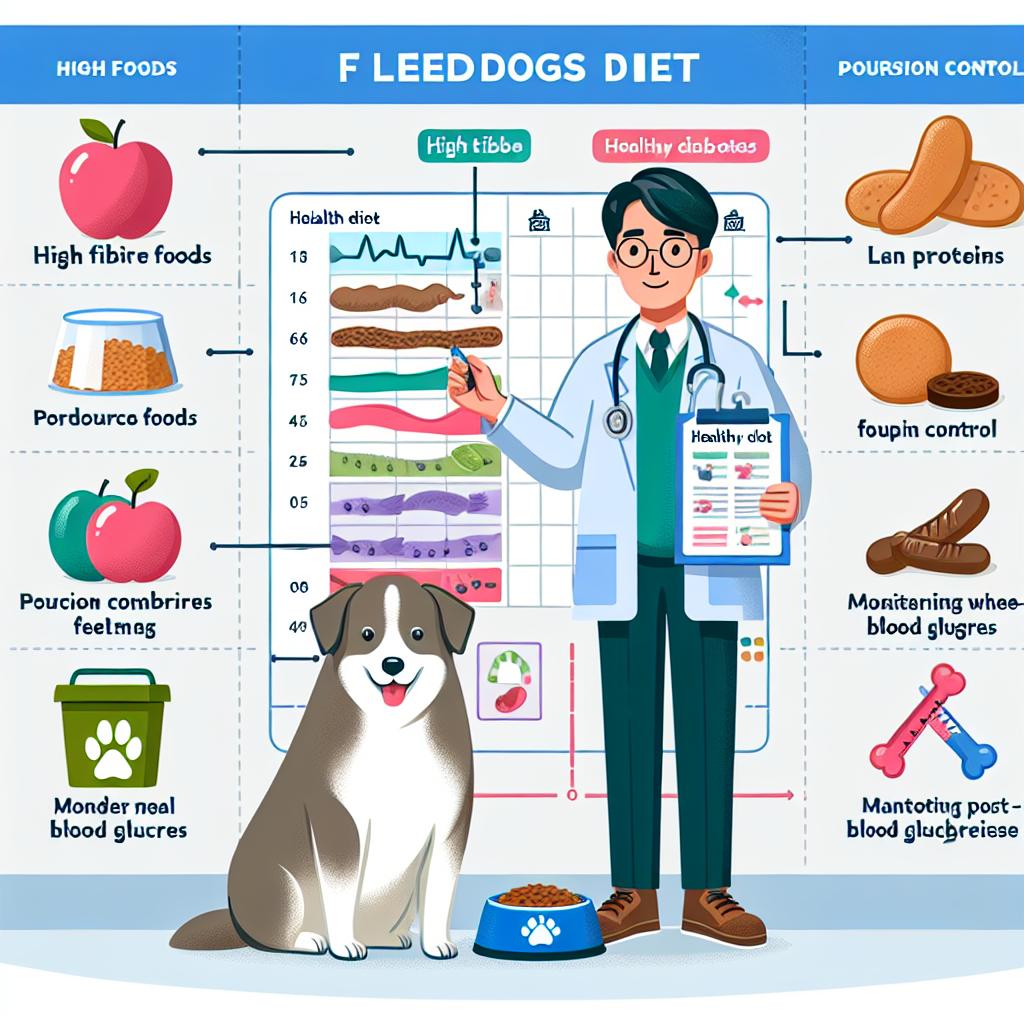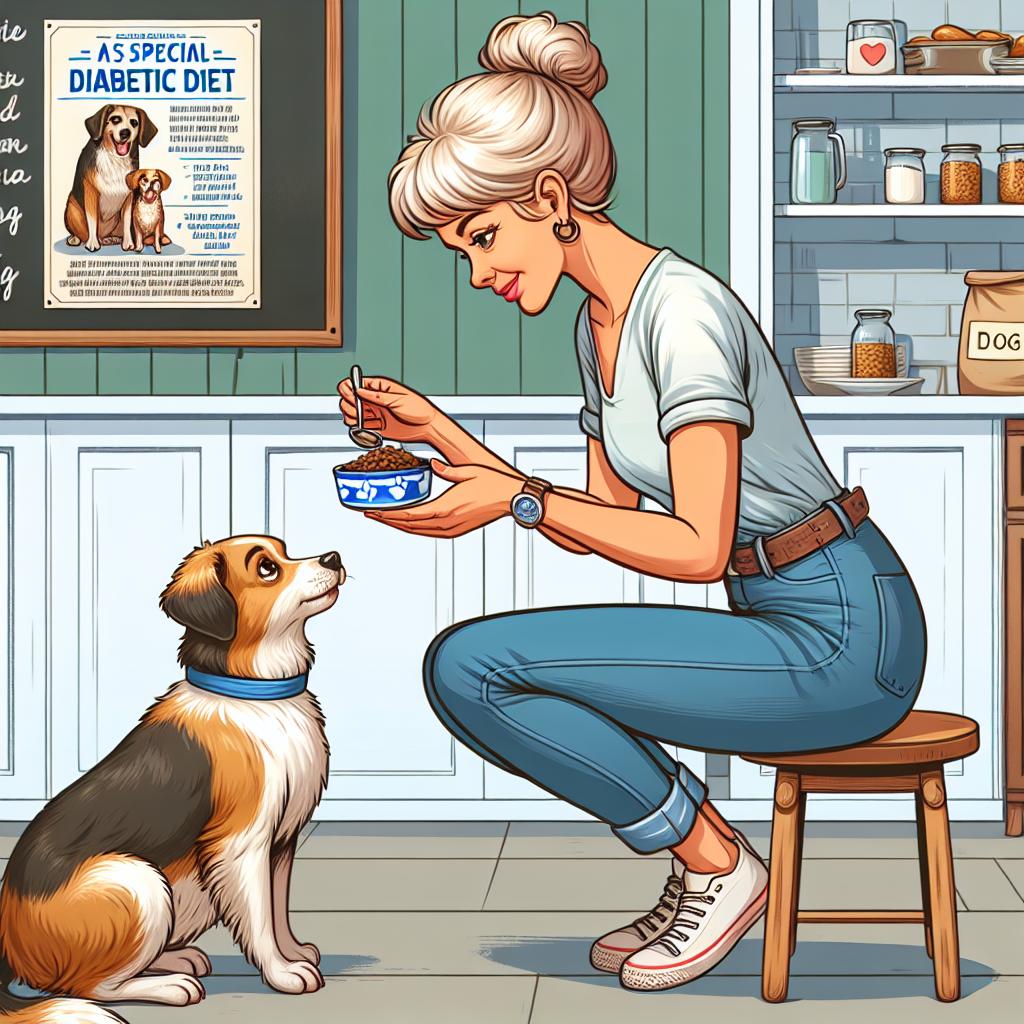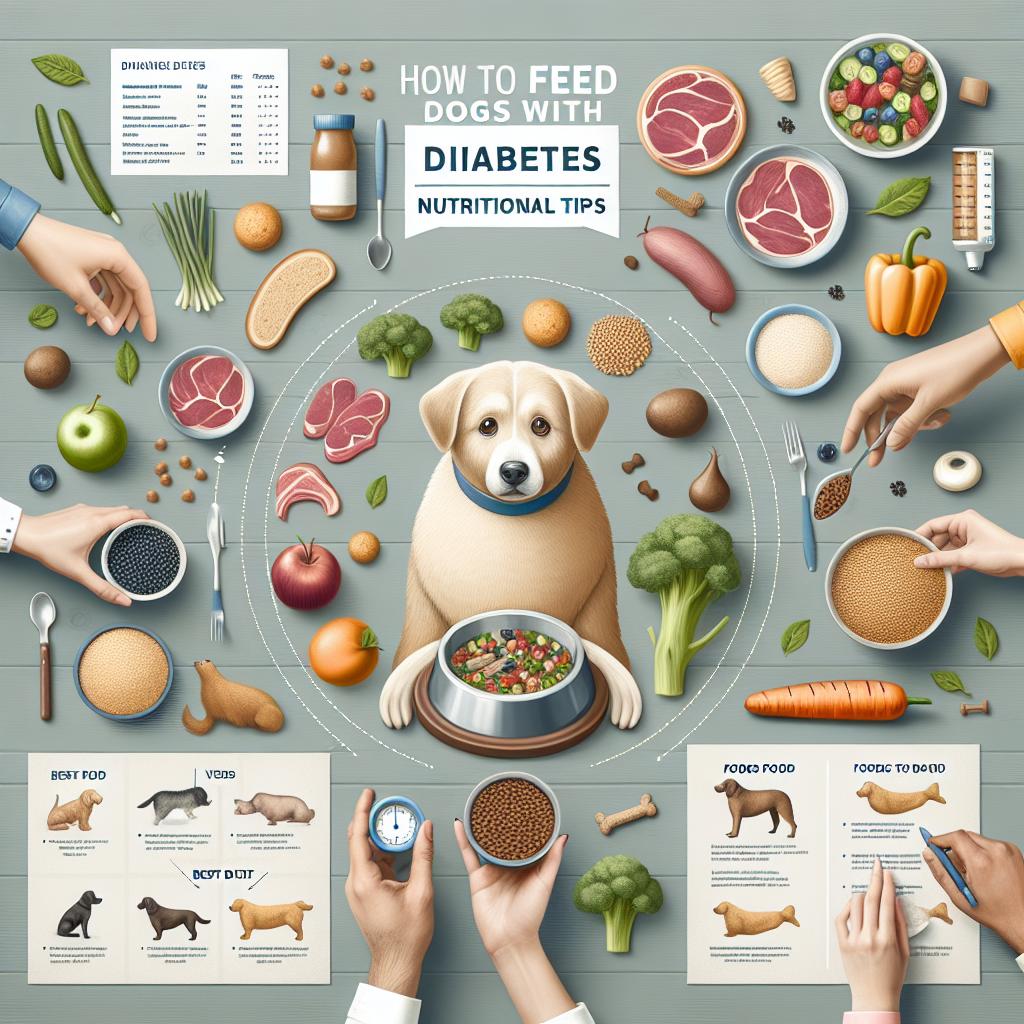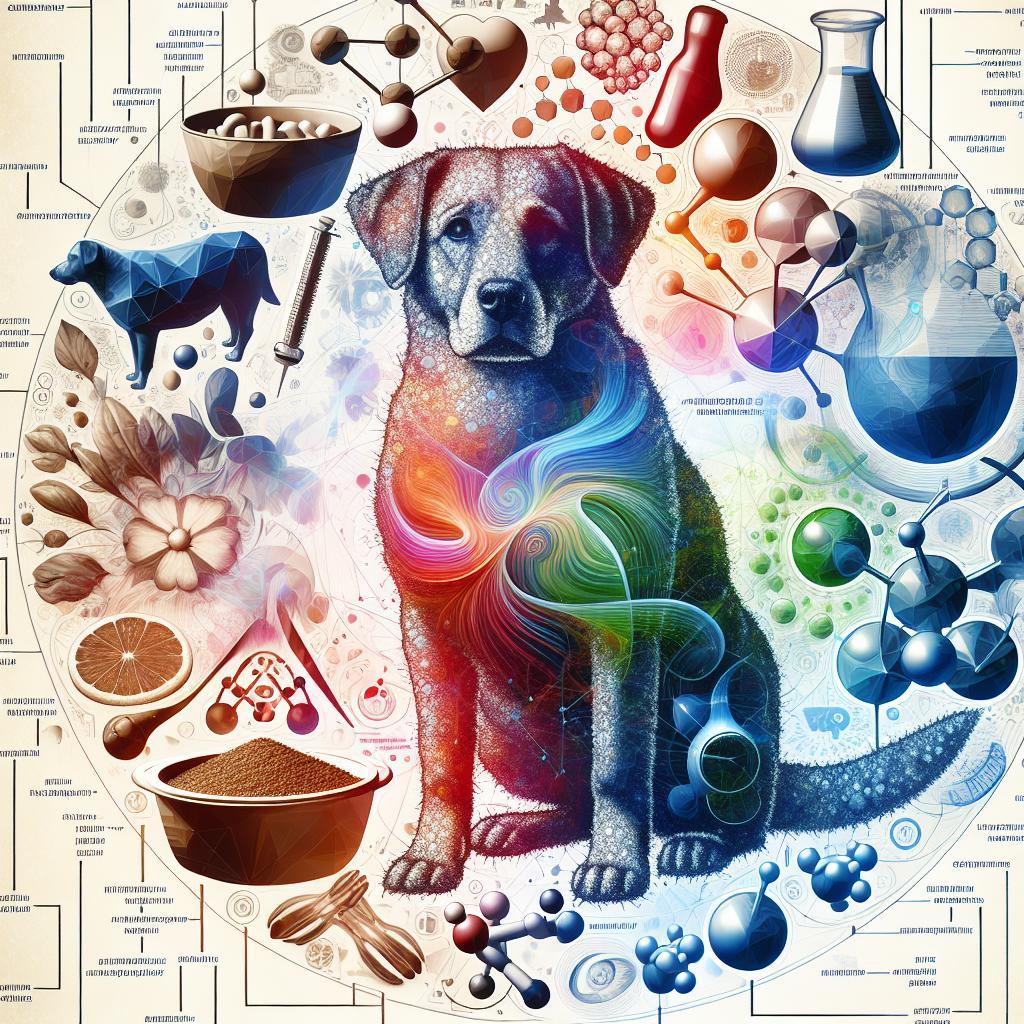Title: How to Feed Dogs with Diabetes: Nutritional Tips
In the quiet companionship of a wagging tail lies a world of joy and unconditional love. But for many dog owners, that bond can be tested by the complexities of managing a pet with diabetes. Just like humans, our canine companions require special attention when it comes to their dietary needs, especially when facing chronic health conditions. Crafting the perfect meal plan for a diabetic dog goes beyond basic feeding; it demands a thoughtful approach that balances nutrition with the unique challenges of the disease. In this article, we’ll explore essential nutritional tips that can help ensure your furry friend not only maintains proper blood sugar levels but also enjoys a happier, healthier life. Whether you’re newly navigating this journey or looking to refine your current feeding routine, understanding the right foods and feeding practices is key to nurturing that vital bond between you and your dog. Let’s embark on this path to better health together.
Understanding Diabetic Dog Nutrition
Feeding a diabetic dog requires a fine balance of nutrition and portion control to help manage their condition. Focus on a diet rich in high-quality proteins and low-glycemic carbohydrates. Consider incorporating ingredients like lean meats, fish, and non-starchy vegetables. Avoid foods high in sugars and simple carbohydrates, as these can cause spikes in blood glucose levels. Additionally, maintaining a consistent feeding schedule can aid in stabilizing blood sugar. Here are some key factors to consider when planning your dog’s meals:
- Protein Sources: Choose lean meats like chicken, turkey, and fish.
- Carbohydrate Choices: Opt for whole grains and legumes, avoiding fillers like corn and soy.
- Fiber Intake: Increase soluble fiber from sources such as oats, barley, and vegetables to help regulate blood glucose levels.
- Fat Content: Include healthy fats but monitor portions, as fats can be calorie-dense.
It’s also helpful to understand how certain foods can impact your dog’s health. A well-structured feeding routine, combined with the right food choices, goes a long way in managing diabetes effectively. Below is a simple table of recommended food types and their benefits:
| Food Type | Benefits |
|---|---|
| Lean Meat | Supports muscle health and weight management. |
| Non-Starchy Vegetables | Provides essential nutrients without causing blood sugar spikes. |
| Whole Grains | Offers slow-releasing energy and fiber. |
| Fish Oil | Rich in omega-3 fatty acids, promotes heart health. |

Choosing the Right Ingredients for Optimal Blood Sugar Control
When managing a diabetic dog’s diet, the selection of ingredients plays a crucial role in regulating blood sugar levels. It is essential to prioritize whole, unprocessed foods that are rich in fiber and low in carbohydrates. Whole grains like brown rice and oats not only provide a steady source of energy but also help maintain a stable glucose level. Additionally, incorporating lean proteins such as chicken, turkey, or fish can enhance muscle health without causing insulin spikes. Vegetables like broccoli, spinach, and green beans are excellent choices as they are nutrient-dense and low in calories, making them suitable for weight management alongside diabetes control.
Moreover, avoiding certain ingredients is equally important. Sugary treats, high-carb snacks, and processed foods can lead to dramatic fluctuations in blood sugar levels, making it essential to read ingredient labels carefully. A focus on low glycemic index foods allows for gradual sugar absorption, which benefits overall health. Consider creating a balanced meal plan that includes the following elements:
| Food Type | Examples |
|---|---|
| Whole Grains | Brown rice, quinoa, oats |
| Proteins | Chicken, turkey, fish |
| Vegetables | Broccoli, spinach, carrots |

Portion Sizes and Meal Timing: Key Strategies for Success
When managing a diabetic dog, portion sizes play a crucial role in regulating their blood sugar levels. One effective strategy is to measure food precisely, ensuring consistency in calorie intake. Smaller, more frequent meals can help maintain stable glucose levels by preventing spikes. Consider the following guidelines for portion control:
- Use a measuring cup to dispense food accurately.
- Consult your veterinarian for the appropriate calorie count based on weight and activity level.
- Monitor your dog’s weight regularly to adjust portions as necessary.
Meal timing is equally important in the diabetic diet. Establish a routine that includes feeding your dog at the same times each day, which aids in regulating their insulin response. This consistency helps your pet’s body anticipate food intake and manage glucose levels more effectively. Here’s a simple way to structure meal times:
| Time | Meal | Notes |
|---|---|---|
| 8:00 AM | Breakfast | High-fiber kibble |
| 12:00 PM | Midday Snack | Healthy veggies |
| 6:00 PM | Dinner | Low-fat protein |

Supplementing Your Diabetic Dog’s Diet: Benefits and Considerations
Supplementing your diabetic dog’s diet can offer numerous advantages, enhancing not only their nutritional intake but also their overall health. By incorporating specific supplements, you can provide essential nutrients that support your dog’s metabolic functions. Some key supplements to consider include:
- Omega-3 Fatty Acids: Help reduce inflammation and support heart health.
- Probiotics: Promote digestive health and improve gut flora.
- Fiber Supplements: Aid in glucose control by slowing down sugar absorption.
While the benefits can be substantial, it’s crucial to approach supplementation thoughtfully. Not all products are created equal, and some may interfere with diabetes management. Before adding any supplements, consult your veterinarian to ensure they are safe and beneficial for your dog’s specific condition. Additionally, consider evaluating the existing diet to identify any nutritional deficiencies. This evaluation might lead to the inclusion of:
| Supplement | Benefit | Consideration |
|---|---|---|
| Vitamin E | Improves immune function | Monitor for potential fatty acid imbalance |
| Cinnamon | Helps regulate blood sugar | Use in moderation, as excessive amounts can be harmful |
| Glucosamine | Supports joint health | Check for compatibility with other medications |
Q&A
Q&A: How to Feed Dogs with Diabetes – Nutritional Tips
Q1: What is canine diabetes, and how does it affect a dog’s diet?
A1: Canine diabetes, primarily diabetes mellitus, occurs when a dog’s body fails to produce enough insulin or cannot effectively use the insulin produced. This leads to elevated blood sugar levels. Consequently, managing your dog’s diet becomes a crucial part of diabetes management. A balanced diet helps stabilize blood sugar levels, maintain a healthy weight, and ensure your furry friend receives essential nutrients.
Q2: What types of food should I feed my dog with diabetes?
A2: Opt for a high-fiber, low-glycemic diet. Foods rich in complex carbohydrates, like sweet potatoes or oatmeal, can help regulate blood sugar levels. Incorporate lean proteins, such as chicken or fish, and healthy fats like flaxseed oil. Always avoid foods high in sugars and simple carbohydrates, as they can cause rapid spikes in blood sugar.
Q3: How can I implement portion control in my dog’s meals?
A3: Portion control is vital for managing your dog’s weight and blood sugar levels. Consult your veterinarian for an ideal caloric intake based on your dog’s specific needs. Use a measuring cup to provide consistent portions, and consider feeding smaller meals throughout the day instead of one or two larger ones to keep blood sugar levels stable.
Q4: Are there any specific dog food brands recommended for diabetic dogs?
A4: While specific brands may vary by region and availability, look for veterinary diet foods designed for diabetic dogs, such as Hill’s Prescription Diet w/d or Royal Canin Glycobalance. Always check with your veterinarian before switching your dog’s food, as they can recommend the best options based on your dog’s health status.
Q5: Is it okay to give treats to a diabetic dog?
A5: Yes, but with caution! Treats should be low-fat, low-sugar, and ideally high in fiber. Look for treats specifically designed for diabetic dogs or healthy options like carrot sticks or green beans. Always take treats into account when calculating overall caloric intake for the day.
Q6: How can I monitor my dog’s response to dietary changes?
A6: Monitoring your dog’s response is essential. Keep a daily log of their feeding times, portions, and any treats given, along with observations of their energy levels, mood, and weight. Regularly check with your veterinarian, who may recommend blood glucose testing to ensure your dog’s levels are stable and the diet is effective.
Q7: Are there any foods I should completely avoid for a diabetic dog?
A7: Yes, absolutely! Steer clear of foods high in sugars and simple carbohydrates, such as white bread, rice, and many commercial dog treats. Additionally, avoid giving table scraps, especially those rich in fat or sugars, as they can cause significant fluctuations in blood glucose levels.
Q8: How important is a feeding schedule for a diabetic dog?
A8: A consistent feeding schedule is paramount. Establish regular mealtimes, ideally coinciding with insulin administration, to help maintain stable blood sugar levels. This predictability allows for better regulation of your dog’s glucose levels and contributes to their overall well-being.
By following these nutritional tips and maintaining open communication with your veterinarian, you can help your diabetic dog lead a happy and healthy life!
In Retrospect
managing diabetes in dogs is a journey that requires careful attention to their nutritional needs. By understanding the specific dietary requirements and making informed choices, you can help your furry friend maintain a healthy lifestyle while keeping their blood sugar levels stable. Remember, every dog is unique, and what works for one may not be suitable for another. Collaborating with your veterinarian and staying informed about the latest advancements in canine diabetes care can empower you to make the best decisions for your canine companion. With patience, love, and the right approach to nutrition, you can enhance their well-being and ensure they continue to enjoy the simple joys of life by your side. Here’s to many happy, tail-wagging moments together!

